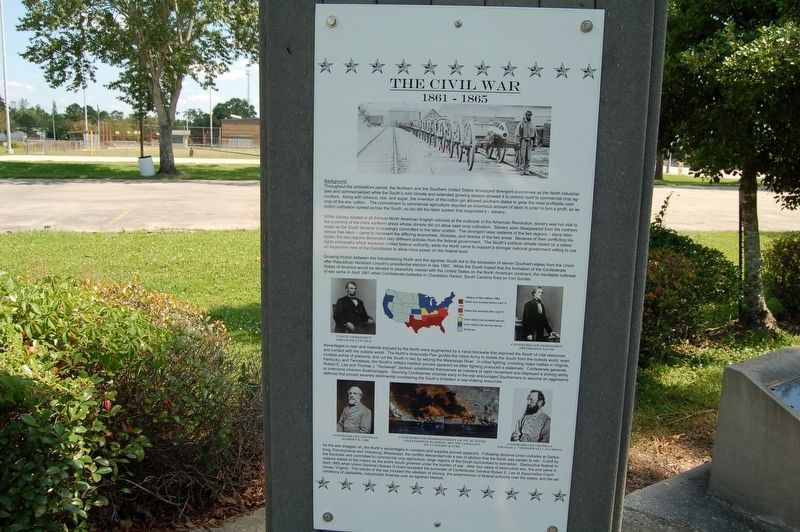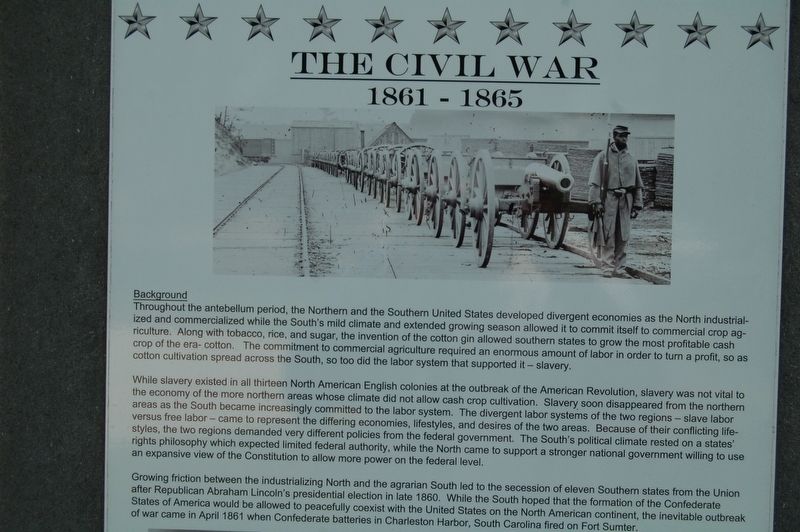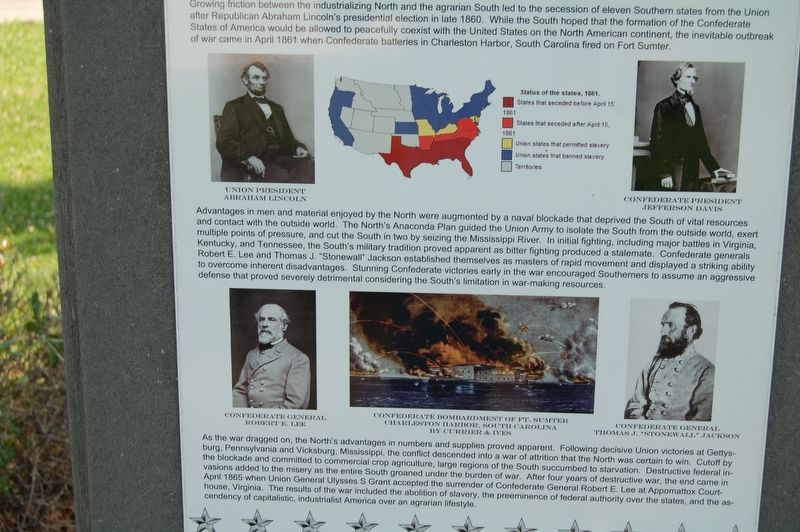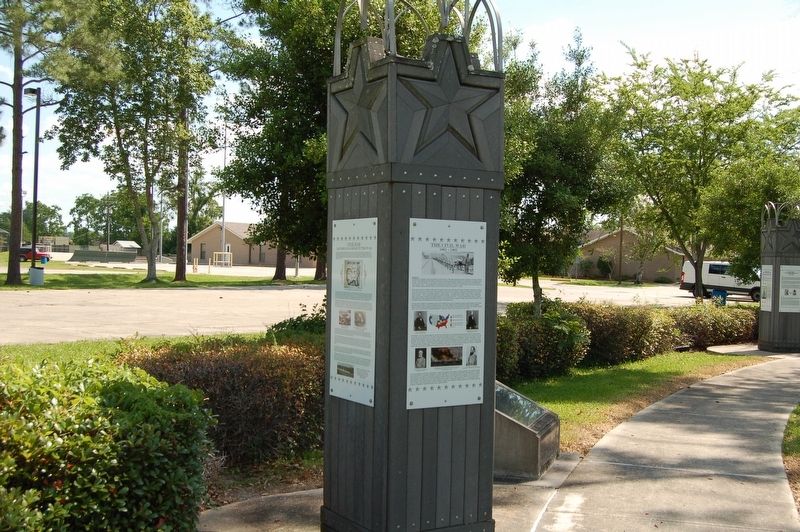The Civil War
1861-1865
Background
Throughout the antebellum period, the Northern and the Southern United States developed divergent economies as the North industrialized and commercialized while the South's mild climate and extended growing season allowed it to commit itself to commercial crop agriculture. Along with tobacco, rice, and sugar, the invention of the cotton gin allowed southern states to grow the most profitable cash crop of the era- cotton. The commitment to commercial agriculture required an enormous amount of labor in order to turn a profit, so as cotton cultivation spread across the South, so too did the labor system that supported it - slavery.
While slavery existed in all thirteen North American English colonies at the outbreak of the American Revolution, slavery was not vital to the economy of the more northern areas whose climate did not allow cash crop cultivation. Slavery soon disappeared from the northern areas as the South became increasingly committed to the labor system. The divergent labor systems of the two regions - slave labor versus free labor - came to represent the differing economies, lifestyles, and desires of the two areas. Because of their conflicting life- styles, the two regions demanded very different policies from the federal government. The South's political climate rested on a states' rights philosophy
which expected limited federal authority, while the North came to support a stronger national government willing to use an expansive view of the Constitution to allow more power on the federal level.Growing friction between the industrializing North and the agrarian South led to the secession of eleven Southern states from the Union after Republican Abraham Lincoln's presidential election in late 1860. While the South hoped that the formation of the Confederate States of America would be allowed to peacefully coexist with the United States on the North American continent, the inevitable outbreak of war came in April 1861 when Confederate batteries in Charleston Harbor, South Carolina fired on Fort Sumter.
Advantages in men and material enjoyed by the North were augmented by a naval blockade that deprived the South of vital resources and contact with the outside world. The North's Anaconda Plan guided the Union Army to isolate the South from the outside world, exert multiple points of pressure, and cut the South in two by seizing the Mississippi River. In initial fighting, including major battles in Virginia, Kentucky, and Tennessee, the South's military tradition proved apparent as bitter fighting produced a stalemate. Confederate generals Robert E. Lee and Thomas J. "Stonewall" Jackson established themselves as masters of rapid movement and displayed a striking ability to
overcome inherent disadvantages. Stunning Confederate victories early in the war encouraged Southerners to assume an aggressive defense that proved severely detrimental considering the South's limitation in war-making resources.As the war dragged on, the North's advantages in numbers and supplies proved apparent. Following decisive Union victories at Gettysburg, Pennsylvania and Vicksburg, Mississippi, the conflict descended into a war of attrition that the North was certain to win. Cutoff by the blockade and committed to commercial crop agriculture, large regions of the South succumbed to starvation. Destructive federal invasions added to the misery as the entire South groaned under the burden of war. After four years of destructive war, the end came in April 1865 when Union General Ulysses S Grant accepted the surrender of Confederate General Robert E. Lee at Appomattox Court- house, Virginia. The results of the war included the abolition of slavery, the preeminence of federal authority over the states, and the ascendency of capitalistic, industrialist America over an agrarian lifestyle.
Topics. This historical marker is listed in this topic list: War, US Civil.
Location. 30° 13.711′ N, 90° 54.8′ W. Marker is in Gonzales, Louisiana, in Ascension Parish. Marker can be reached from South Irma
Other nearby markers. At least 8 other markers are within walking distance of this marker. A different marker also named Civil War (here, next to this marker); a different marker also named Civil War (here, next to this marker); a different marker also named Civil War (here, next to this marker); World War I (a few steps from this marker); "The War to End War" (a few steps from this marker); A View From The Trenches: A Doughboy From Donaldsonville Writes Home (a few steps from this marker); The Freedom Fountain (a few steps from this marker); The Mexican-American War (within shouting distance of this marker). Touch for a list and map of all markers in Gonzales.
More about this marker. Located in the Gonzales Veterans Memorial Park.
Credits. This page was last revised on March 15, 2018. It was originally submitted on March 15, 2018, by Cajun Scrambler of Assumption, Louisiana. This page has been viewed 331 times since then and 18 times this year. Photos: 1, 2, 3, 4. submitted on March 15, 2018.



